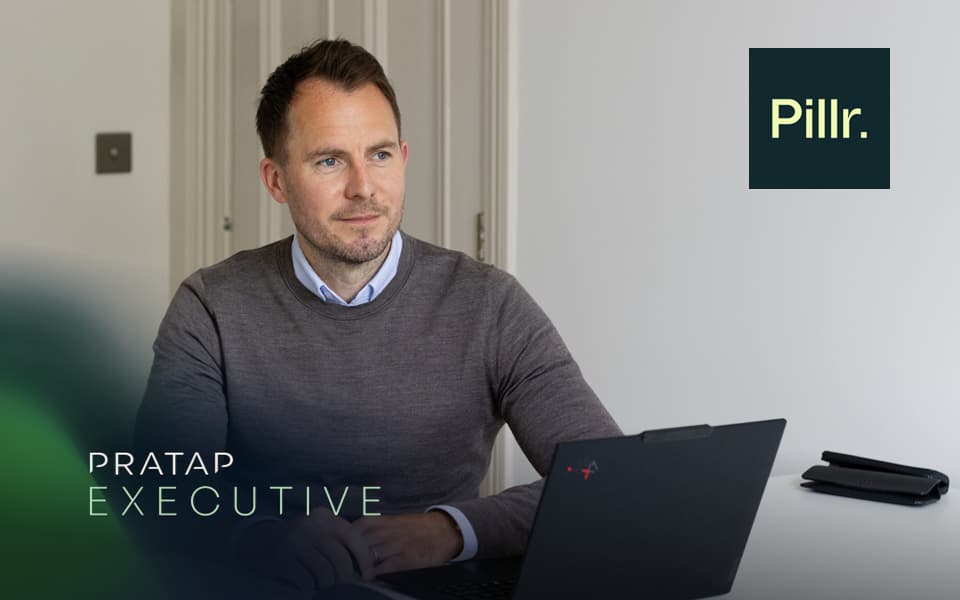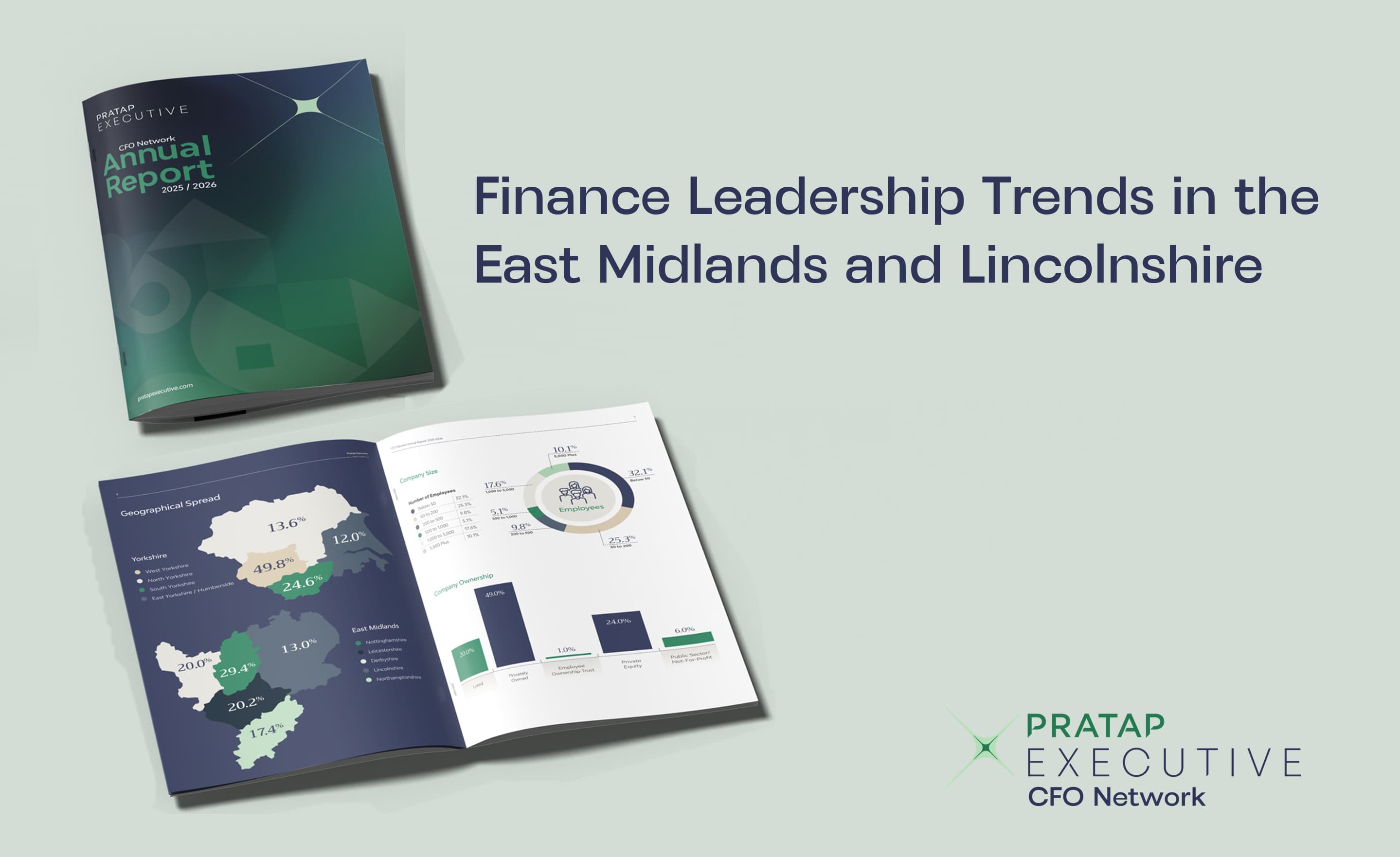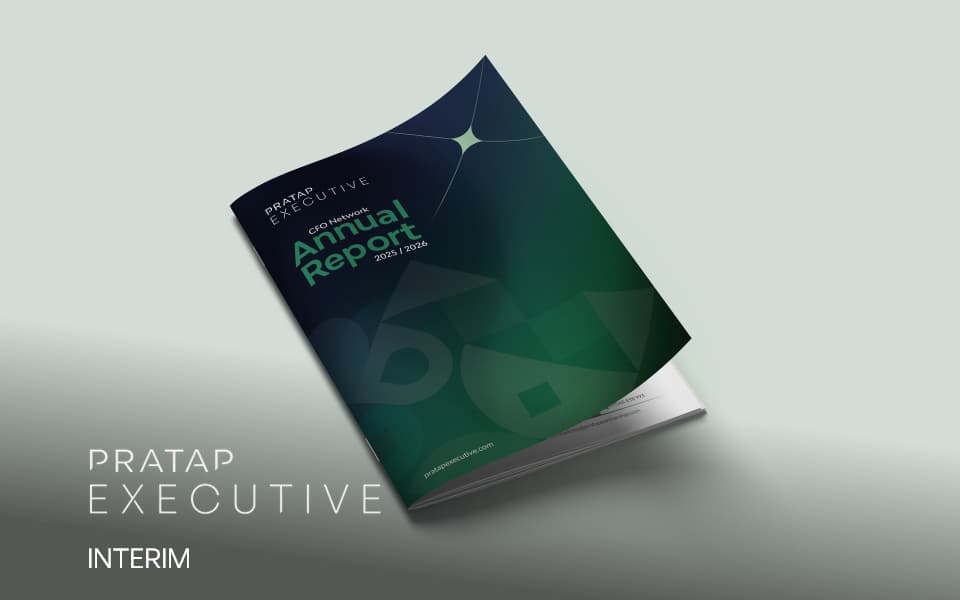The Evolution of HR: From Support Function to Strategic Powerhouse
HR has evolved from a support function to a strategic force in business. In this edition of our Evolution of HR series, Stephanie McGinty shares insights from her journey, highlighting how HR is shaping culture, driving agility, and influencing commercial success.
The Evolution of HR: From Support Function to Strategic Powerhouse
HR has evolved from a support function to a strategic force in business. In this edition of our Evolution of HR series, Stephanie McGinty shares insights from her journey, highlighting how HR is shaping culture, driving agility, and influencing commercial success.
%20Squoosh.jpg)
As part of our Evolution of HR series, Pratap Executive is speaking with forward-thinking HR leaders who have experienced firsthand the dramatic shift in the function—from administrative personnel management to strategic business partnership.
In this instalment, we spoke to Stephanie McGinty, an experienced HR / Strategic Director. Stephanie’s career is a textbook example of both personal growth and the wider transformation of the HR function. From her early days as a graduate HR trainee through to leadership positions that placed her at the heart of business strategy, Stephanie has seen HR evolve into a driving force behind organisational agility, culture, and commercial impact. In this conversation, she reflects on the journey of HR and the increasingly vital role it plays in shaping business outcomes.

Tell me a little bit about your career journey and how you’ve seen the role that HR brings to businesses evolve over the years?
My career started as a graduate in HR and followed a fairly traditional path – rotating around various specialisms from recruitment to global mobility, ultimately leading to HR Business Partner before progressing to Head of HR then HR Director. It was after this, when I stepped sideways to a generalist leadership role with responsibility for different functions across a business, that I really felt the value first hand that HR brings. I was lucky to be working with a Managing Director who really valued people and she trusted HR to lead the way in making the business a great place to work, but more than just that, she gave HR a voice in the wider running of the business – contributing to decisions that delivered true commercial value.
I’ve seen, and been part of, significant shifts in HR during my career. I’ve been in teams that have led strategies to devolve HR to line management; centralise HR support; implement business partnering but what has been consistent has been the recognition that people are an organisations greatest asset (and often it’s most costly). What I’ve seen organisations struggle with is how to structure their HR teams so that they can maximise their organisations people resources.
Historically, HR (Human Resources) was primarily focused on administrative tasks and seen as a support function, something that ensured the business ran without issues when it came to people-related processes. I’m pleased to have been part of the HR community as we’ve seen it transform in more recent years, now playing a critical role in shaping company culture, developing leadership, and influencing business decisions by aligning human capital strategies with business goals.
In short, the role of HR has evolved from a transactional, back-office function to a proactive, strategic partner that helps shape business strategy and enhances the overall employee experience.
In your experience, what are the most underutilised contributions HR can bring to business strategy?
I think there are many, but I’ll just focus on three!
Leadership Development & Succession Planning - I mean this in both a formal and informal sense. Having development programme that target specific outcomes, are measured, innovative and well-managed are really important to create tomorrow’s leadership. But, HR also plays a coaching role everyday, or at least it should! Making sure teams and leaders are supported, sometimes just through on the spot conversations, to be the best they can be. I find this just as effective as formal programmes.
Collaboration Across Departments – the HR function is really well placed to be the conduit between other functions. Understanding how to get teams working together, designing strategies to overcome challenges, using collaboration as a development opportunity – these are all skills HR professionals can bring to get teams working together to collectively deliver objectives.
Change Management and Organisational Agility – in the fast-paced world we live in, change is a given. HR play an important role in both influencing the shape of change, and how it executes it. This is so critical as inevitably change is linked to ensuring the ongoing performance of the business, so it needs to be delivered quickly, but handled in a way that preserves the culture of the organisation and keeps colleagues engaged.
What role does HR play in shaping organisational culture and how does that influence long-term success?
Fundamentally the culture of an organisation is its personality, and just like a person’s personality can be linked to success because certain traits influence how they approach challenges, interact with others, and manage their goals, the same can be true of an organisation.
HR are the custodians of the shared values, beliefs, behaviours, and practices that shape how colleagues interact with each other, the leadership, and the external world, this can directly influence everything from colleague engagement to overall business performance.
What risks do companies face when they overlook the HR agenda in strategic decision-making?
Overlooking HR in strategic decision making fails to take into consideration the importance people play in the delivery of said strategy. This can be from failing to align recruitment and talent management to the future skills needed in the business to culture and engagement strategies that are not reflective of where the organisation is heading. Ultimately not ensuring your people are a core part of strategic planning will have a commercial impact, but there are certain areas that can have a direct financial impact attributed to them. For example, poor workforce planning and mis-aligned change management. All of these things expose an organisation to commercial and reputational risk, as well as creating an internal environment that is not going to be its most productive.
How would you convince a sceptical leadership team of the value HR brings to the table?
First and foremost, listen and deliver. Listening can be from conversations, observations, taking time to work across the business to more data driven insights – just make sure you understand the business. Use all of this information to develop HR objectives that are linked to the organisations strategic objectives and outcomes, yes policies and procedures are important, but may sure HR initiatives have metrics too. Then….deliver! It sounds simple, but all too often I’ve seen teams fail even when they are clear on what they want to do because they don’t follow through and deliver. One final point, collaborate with the business throughout, HR should be a partner, not just a function or enforcer of policies.
What are some practical steps for companies looking to better integrate HR into their business strategy?
Integrating HR into business strategy isn’t just about giving HR a seat at the table—it’s about ensuring they’re actively shaping the conversation. Encourage HR to use data to drive their insights and decision making, and make sure your HR teams have the opportunity to develop their commercial and business acumen so they are equipped to contribute. HR professionals often overlook their own development! Once you have the team with the right skills, involved in the right conversations and with the right data/insight then they will be better integrated.
What emerging trends do you foresee influencing the next evolution of HR?
Some of the developments in the last few years around flexibility, diversity, well-being and customer experience all seem to be leading to the idea of colleagues as the customer. Treating our people as customers and developing personalised experiences – utilising satisfaction analytics more regularly (as opposed to the traditional engagement surveys) I think is a really interesting trend that could allow us to be far more agile and drive productivity.
HR also cannot escape the use of AI! Whether this be how HR teams use this within their own practices, such as recruitment, or how we navigates the inevitable changes it presents to organisations. Building from the AI theme, I’m really interested in the idea of focusing on skills rather then structures and job titles. Look at the work Gloat are doing in developing agile workforces to not only better meet the skills requirements of an organisation, but to improve retention, develop people and drive collaboration. It might be a step too far for some at this moment in time, but there are certainly some interesting principles we can all learn from.
Final Thoughts: HR at the Heart of Business
Stephanie’s insights are a powerful reminder that the evolution of HR is far from over. From embedding leadership development and cross-functional collaboration, to embracing AI and treating employees as customers, she paints a picture of a function that is dynamic, data-driven, and central to business success.
At Pratap Executive we continue to celebrate leaders like Stephanie who are not just adapting to change, but shaping it. HR is no longer a back-office function—it is a strategic cornerstone. And as Stephanie demonstrates, when HR is truly integrated into business strategy, the potential for sustainable growth and cultural strength is exponential.
For more information on any of the details discussed, or to find out how we can help your business with their Executive Search needs, please contact:
Elise Walsh
07936 364 473
Other Articles in the Evolution of HR Series:










